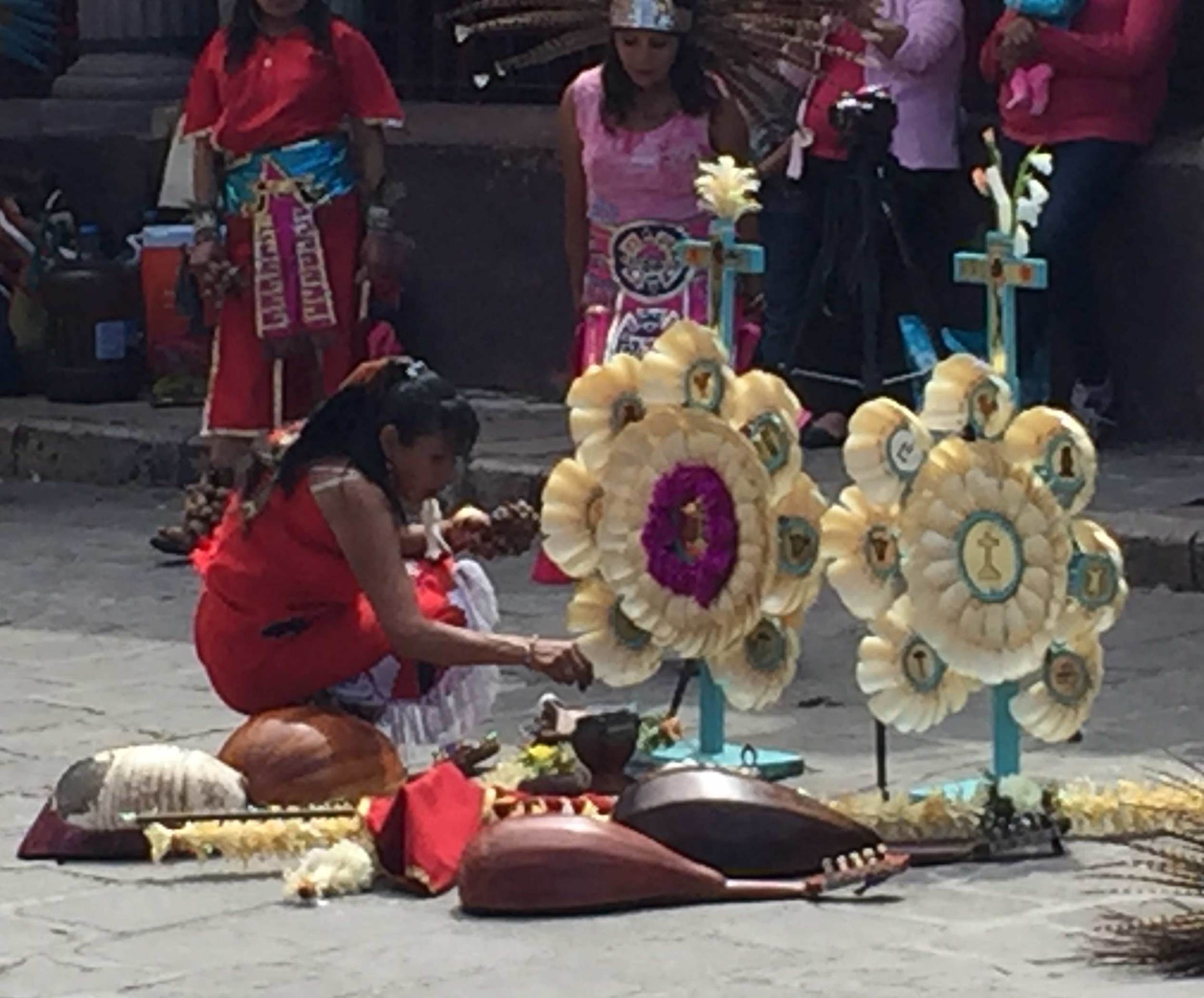Celebrating el Señor de la Conquista
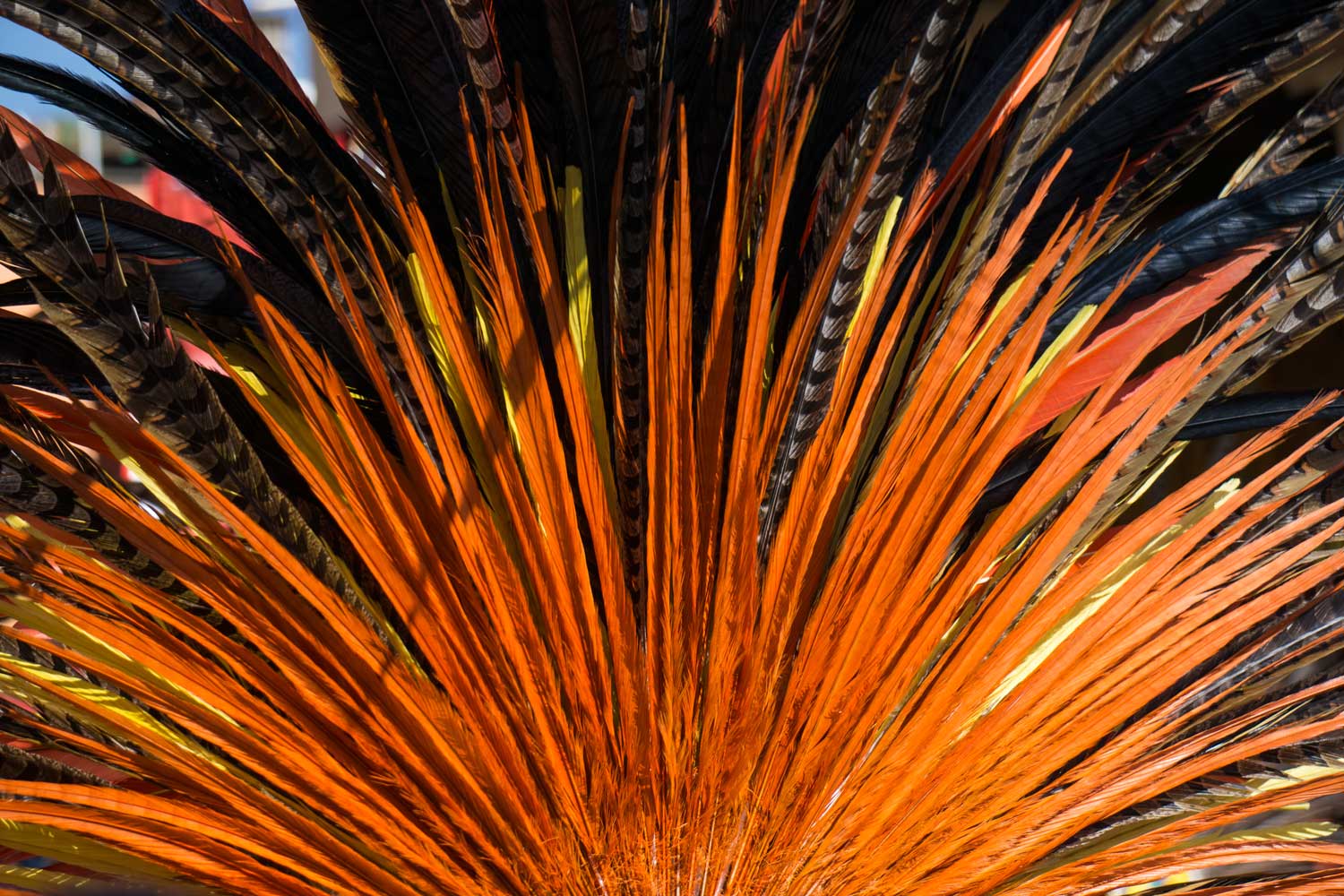
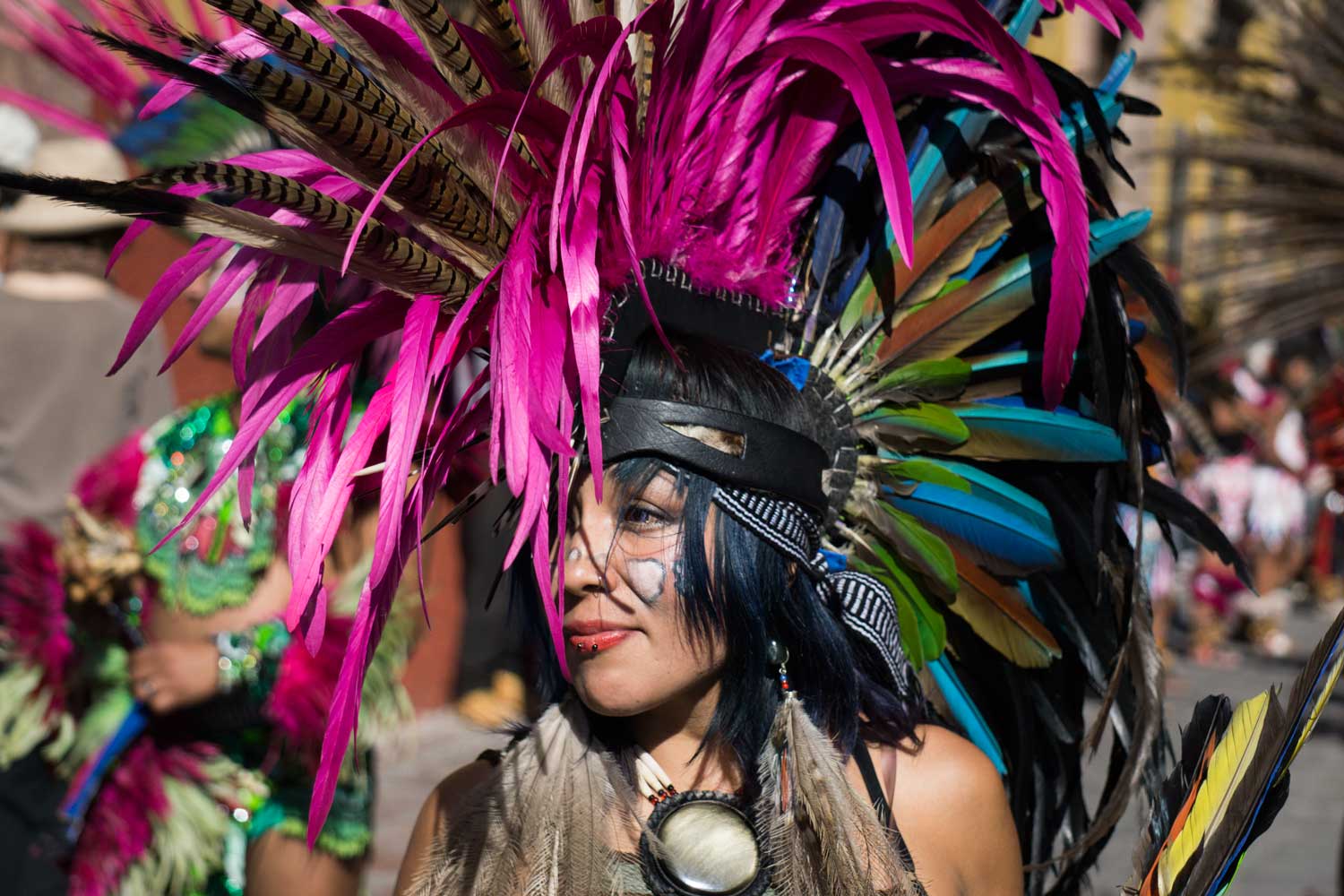
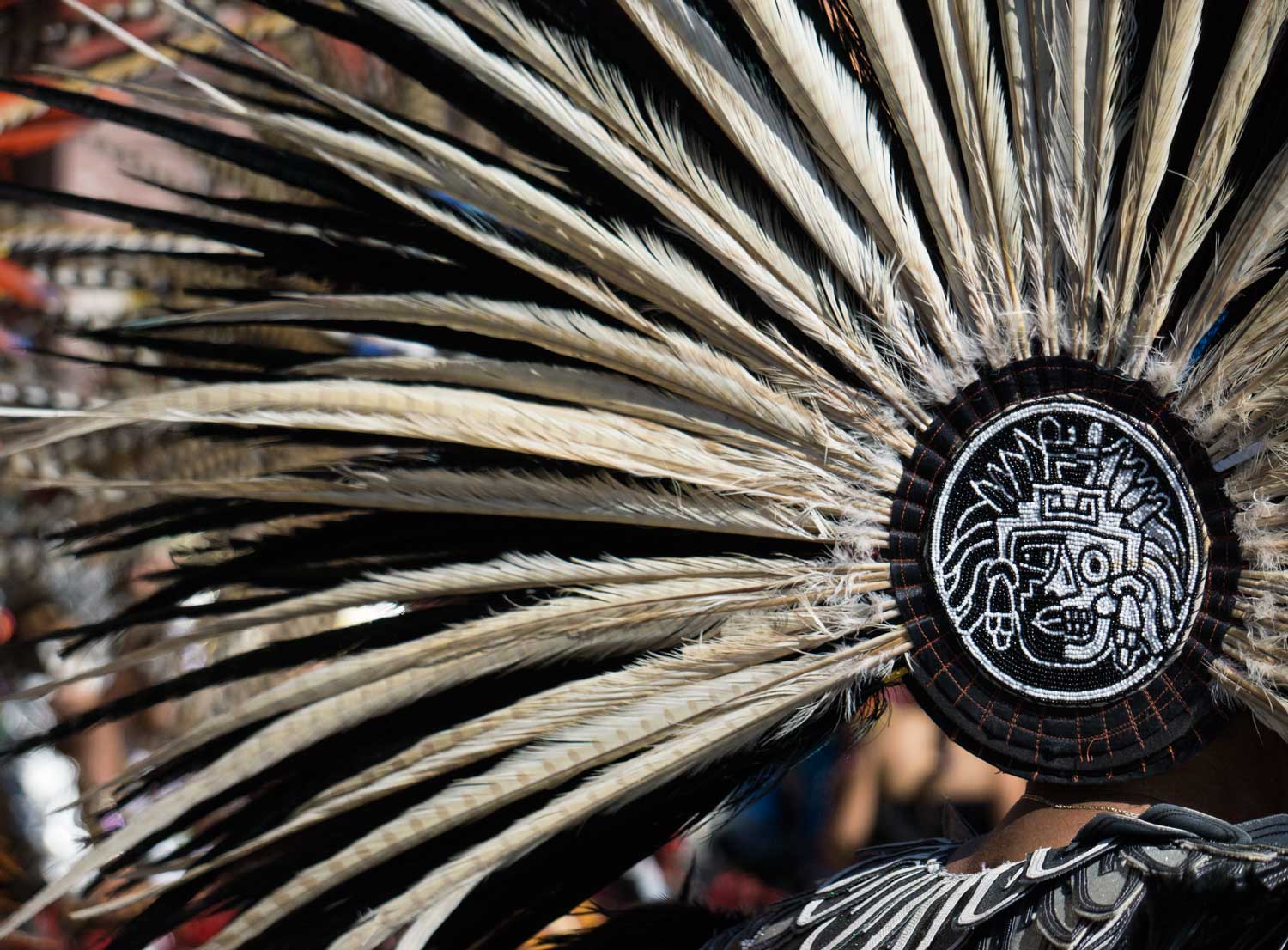
Upon first seeing the Azteca dancers all with elaborate feather headdresses and intense drumming in the plaza or Jardin, I felt transported to the Southwest. Looming above the twisting, twirling and leaping was the emblematic Parroquia, a Parish church and “emblem” of San Miguel. The bright and elaborate costumes with feathers of every color of the rainbow, the beaded gowns, and gourd-like rattles adorning legs and ankles, harken from a Pre-Columbian era. Here, the indigenous Otomi and Chichimeca cultures seemed alive and well in all their glory. But why is it called “El Dia del Senor de la Conquista” or the “Day of the Lord of the Conquest"? A baffling question. Can one imagine the Navaho having a celebration in honor of the US Cavalry?
Fascinating from an anthropological perspective is how such ancient, celebratory rituals could remain so deeply interwoven with the Catholic religion. After all, the Chichimeca had resisted the Spanish and of course, Catholicism, fiercely. And while they were subjected by Franciscan and later Dominicans monks, like many other indigenous cultures in Mexico, they retained much of their pre-Hispanic identity. Unlike their neighbors to the North, New Spain appeared to be more adept at integrating these two worlds. Think of the Lady of Guadelupe once referred to as Tonantzin, the Mother Goddess before the conquest. In her new incarnation, she is often featured more prominently in churches than any cross of Jesus.
Below is a young woman tending to copal incense.
Here, on a March day — as well as night, one can’t help but see (and hear) male, female and even children dancers or "Concheros". Many visit as a pilgrimage from the neighboring campo. Their arrival at dawn can’t be denied thanks to the piercing sounds of fireworks. And, athe dancing grows more intense, some, particularly young men, enter into a trance-like state. One doesn’t have to dance though. Small offerings such as painted turquoise crosses above corn husk flowers adorn the inside of the church. Below we have scenes where people need to pause and take a drink, check their cell phones, readjust their costumes or sell beads to tourists...
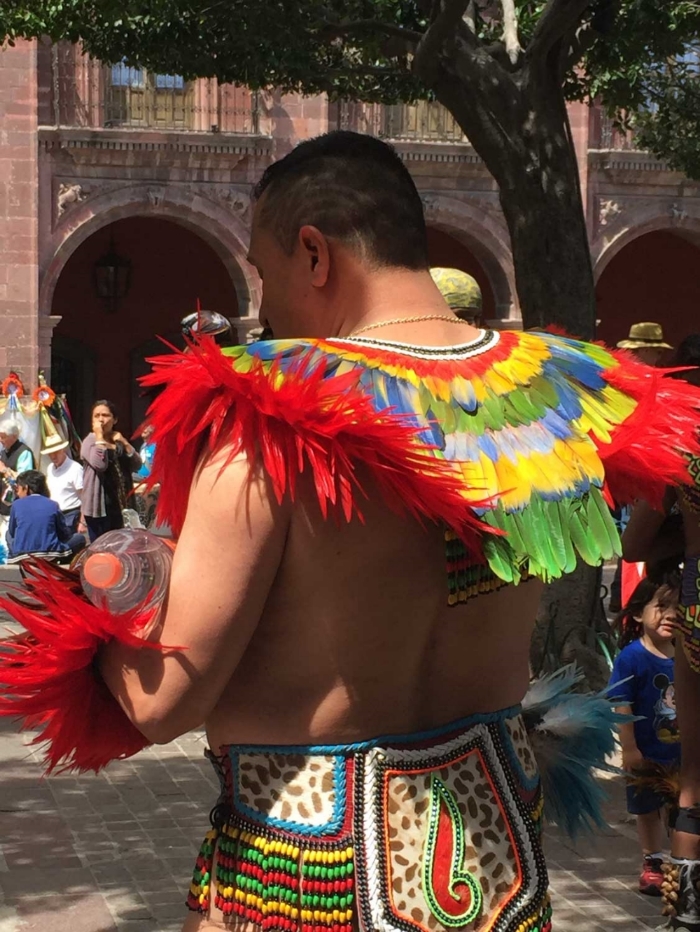
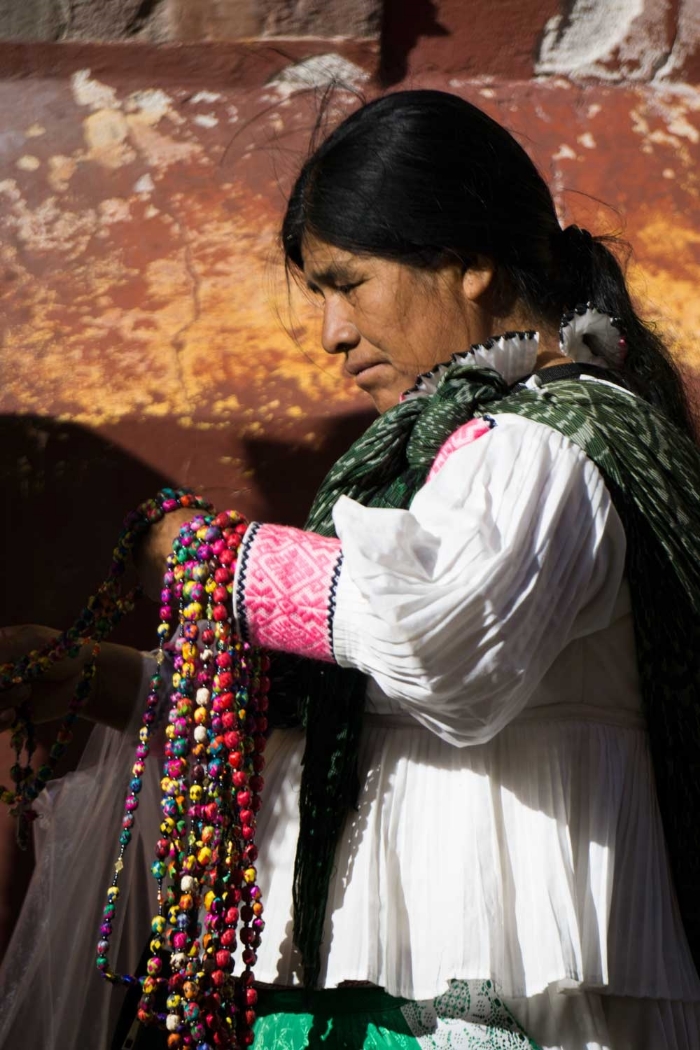
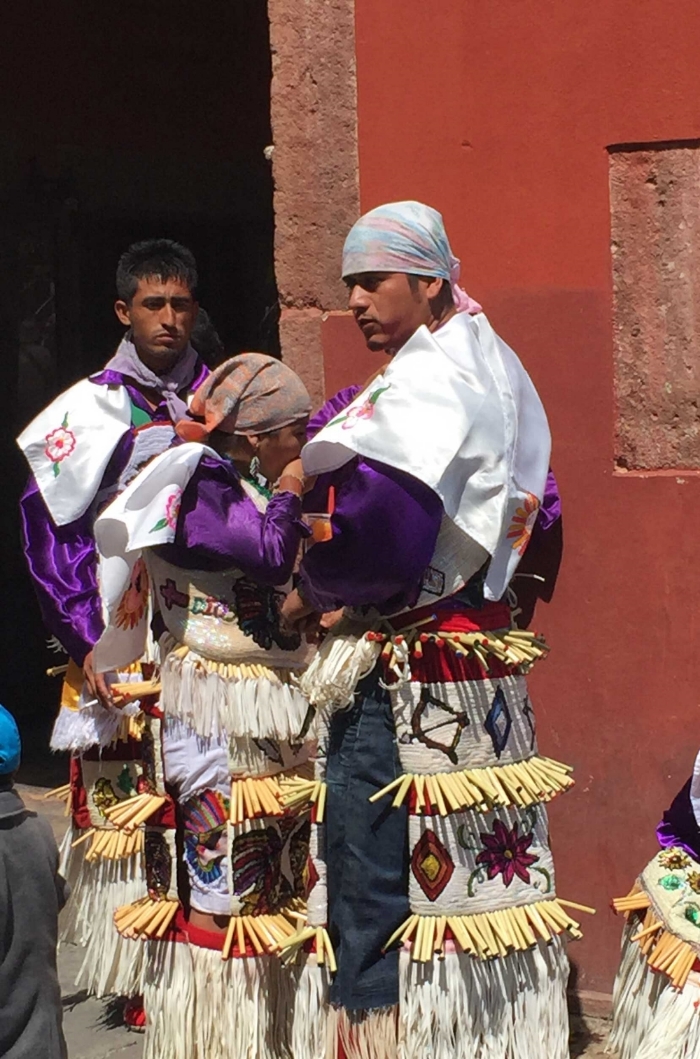
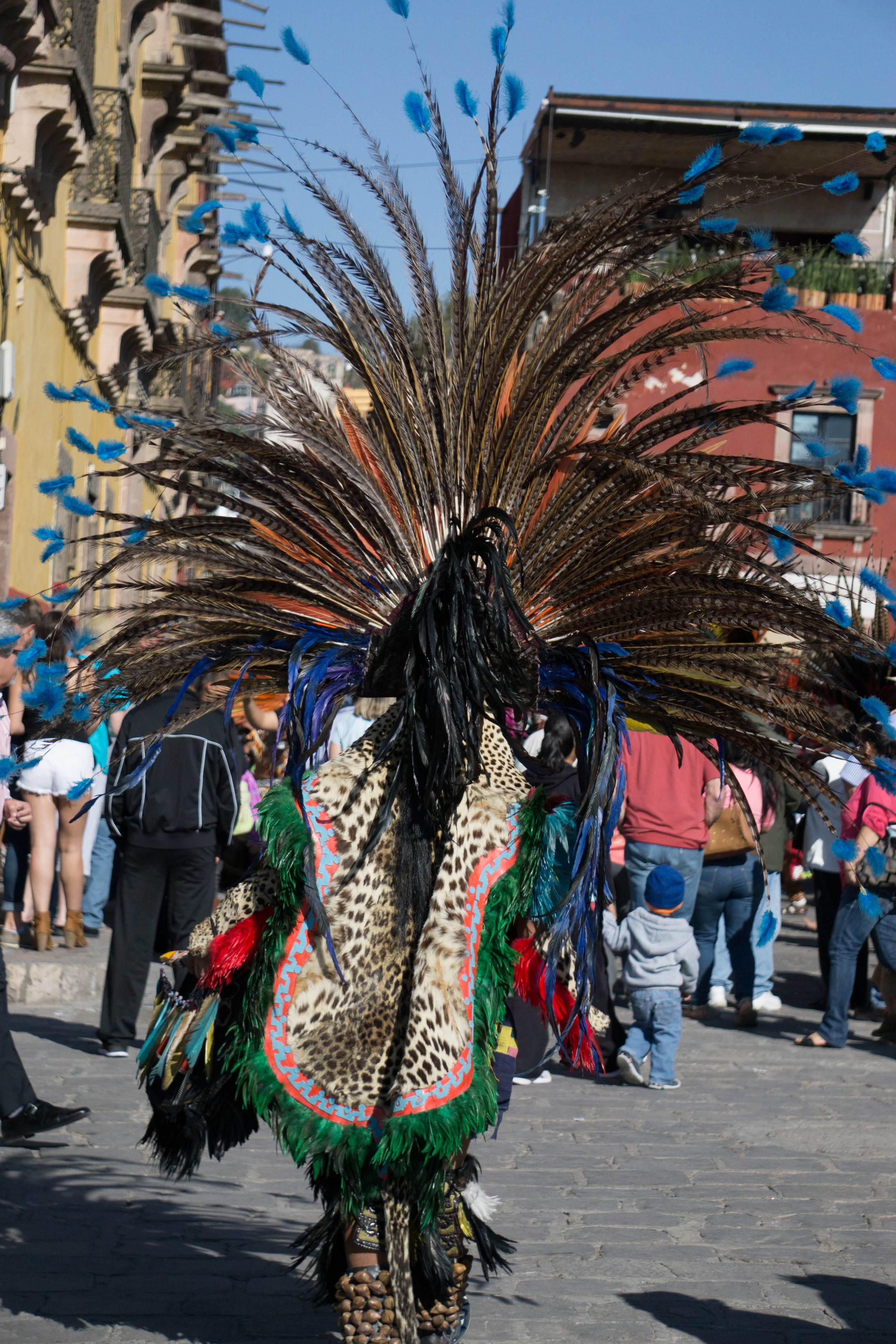
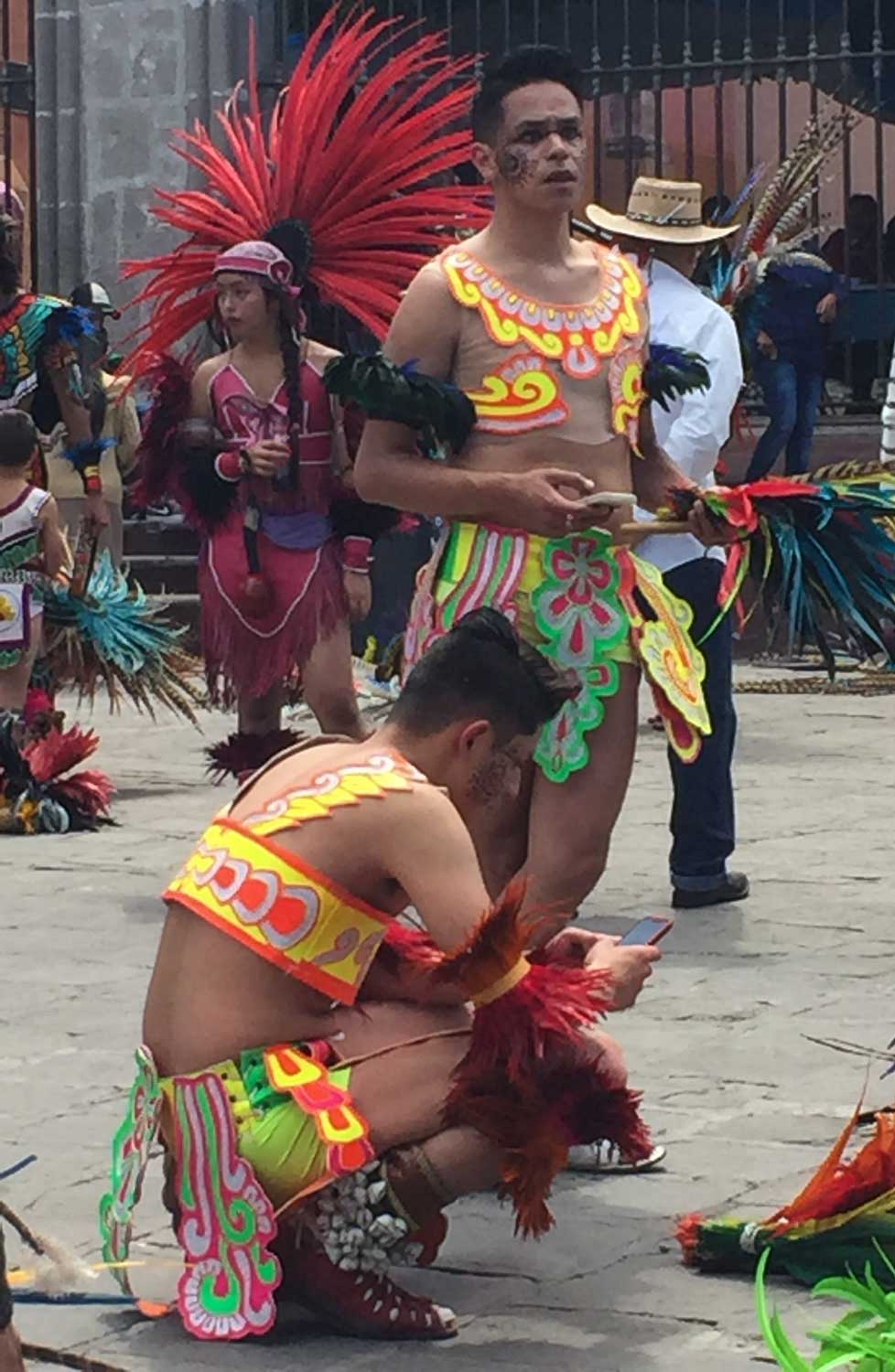
For those interested in learning more about this fascinating festival, check out: http://www.mexconnect.com/articles/4225-our-lord-of-the-conquest-festival-in-san-miguel-de-allende

